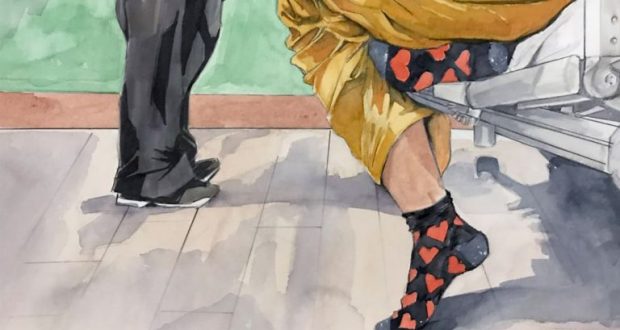A research team from Monash University has designed portable units which can transform acute and sub-acute hospital rooms into temporary palliative care rooms.
The Pal-care unit is the brainchild of the husband and wife team of Dr Thinn Thinn Khine and Dr Nyein Aung and looks to improve family togetherness during the palliative experience of a loved one.
The unit features a fold-out bed for visitors and a digital connectivity module so end-of-life patients can connect with the outside world.
Dr Khine was inspired to improve palliative care when she experienced the process first-hand with her late mother, Julia.
“During this personal experience and journey, we have noted that there are significant knowledge and design gaps in health system infrastructure and service design in relation to facilitating family togetherness in end-of-life care,” she said.
Her husband Dr Aung, senior design research officer at Monash Design Health Collab, was similarly inspired after nights spent of the floor of his mother in-law’s hospital room.
“Thinn Thinn took most of the night shifts, and I accompanied her every night, but the palliative care room and the furniture inside was not meant for two overnight visitors, so I had to sleep on the floor,” he said.
“From this experience, we designed a system to help create better end-of-life care for palliative care patients.”
In Australia, only about a third of palliative patients receive care in a designated palliative care room. Of the country’s 673 public acute hospitals, only 133 have dedicated hospice units, about a third of which are located in NSW.
“We know from the data that the majority of the population want to die at home or close to home, but people are still dying in hospital because dying at home is still a huge task,” Khine said.
“As clinicians, we have these thoughts in our mind when we are interacting with patients, but we have no idea how to turn this into an actual product or design, or something to touch and hold. So we are very fortunate to be able to collaborate with an industrial designer, Nyein, who is, fortunately, my husband.
“When I am dying, something I would want might be quite different to what you would like. How do we define those things?"
The unit is ideal for a health system which is under-resourced, said Aung, and the lack of fit-to-purpose palliative care spaces can be offset by these space saving units.
“Losing a loved one will always hurt," said Nyein. “I don’t think we can design or invent our way around that. But that pain doesn’t have to become trauma. That’s when design can be useful.”
The digital connectivity module can be used to charge and display any electronic devices a patient may have, such a iPhones, enabling patients to digitally spend time with family, beyond the hospital – particularly useful currently as COVID-19 places restrictions on visitation.
For Khine, it’s all about being with a loved one in their final moments.
“The main advantage of this system is improved family togetherness – both physically and digitally. The digital connectivity module is especially relevant now due to physical distancing and current jurisdictional requirements during the COVID-19 pandemic, and people are dying alone,” Khine said.
The portable system is at the concept visualisation stage and the researchers aim to develop a working physical prototype by December.
Do you have an idea for a story?Email [email protected]
 Aged Care Insite Australia's number one aged care news source
Aged Care Insite Australia's number one aged care news source

